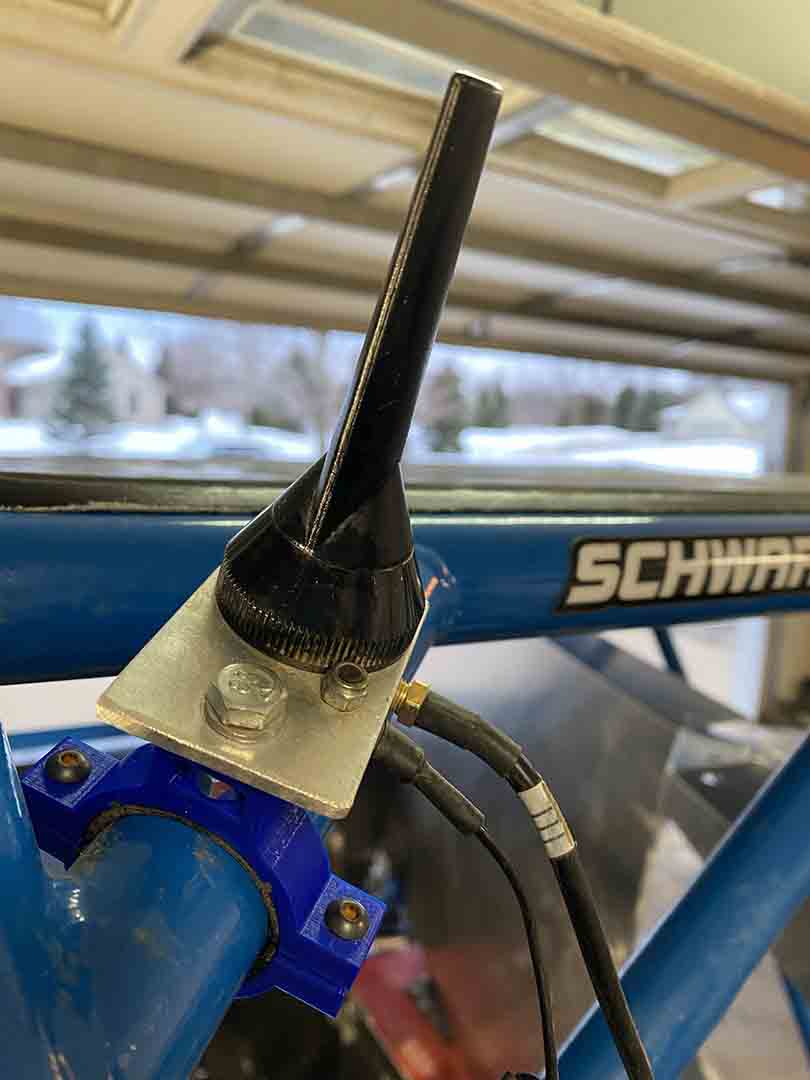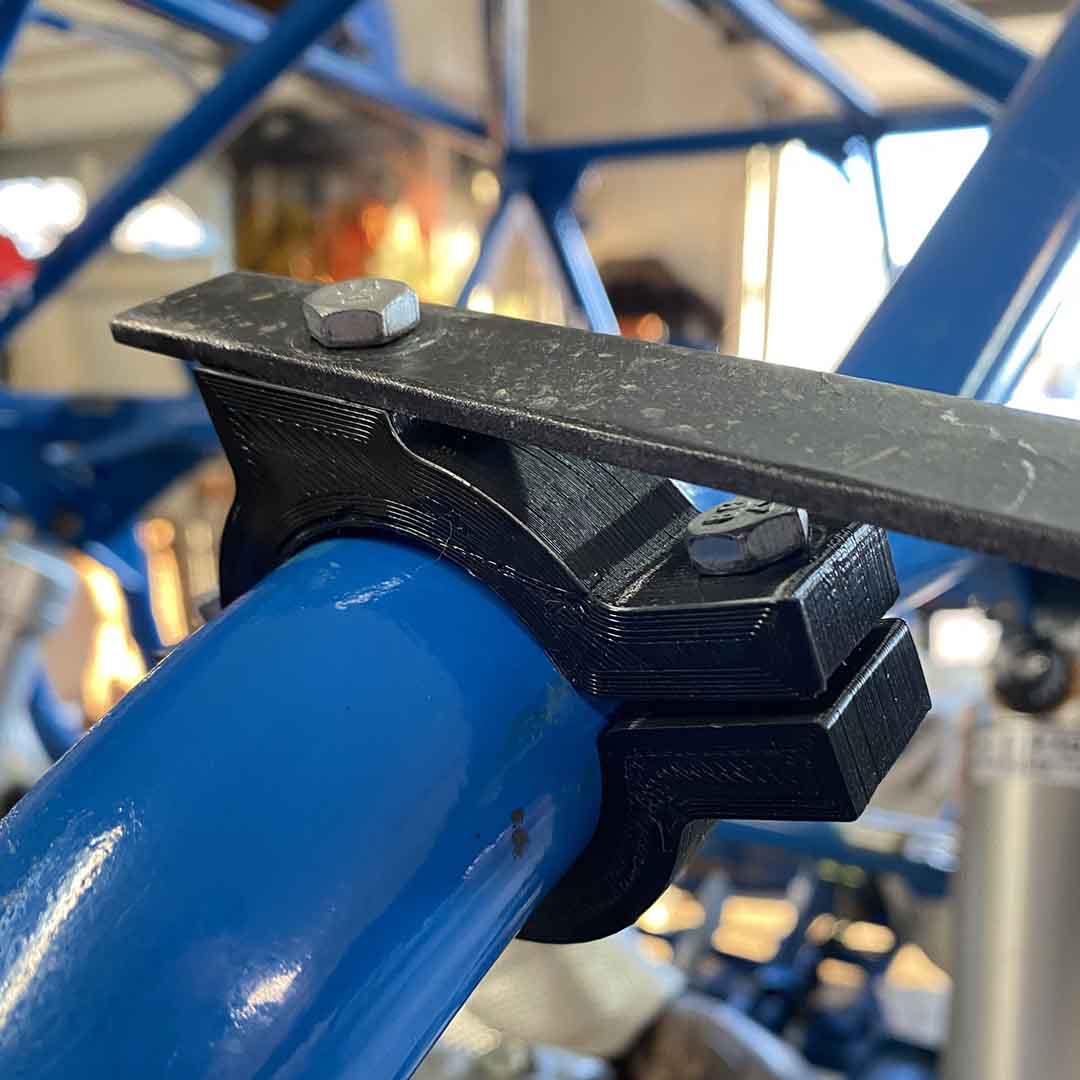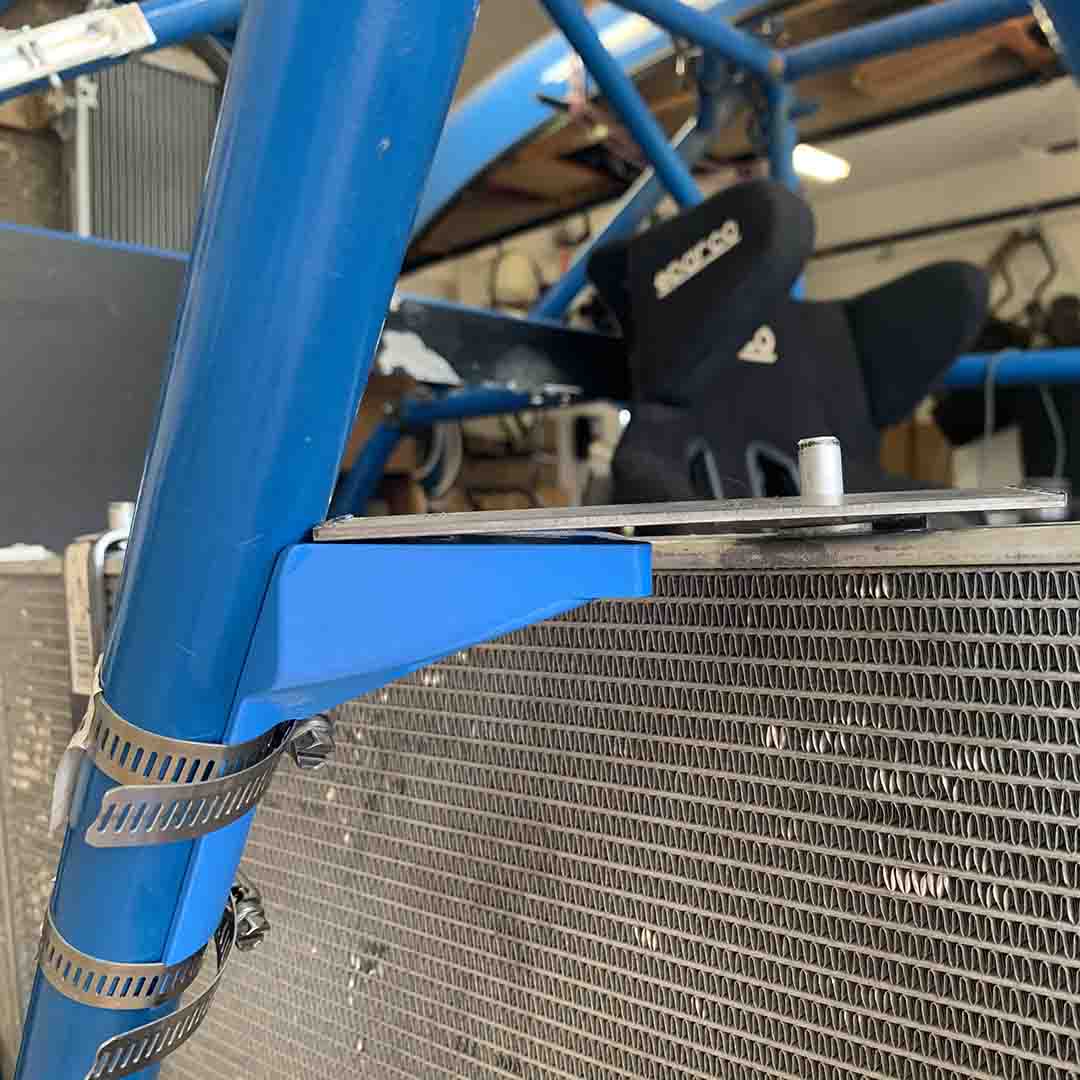Owner and driver, Erik Schwartz of Schwartz Off Road Motorsportz is an engineer by trade and spends all of his free time tinkering and maintaining his vehicle to compete in the Championship Off Road Series. Schwartz has become adept at making improvements on the fly. In order to turn these ideas into reality, Schwartz utilizes Ultimaker 3D printing technology.
Once considered a novelty, the Ultimaker product line has become a necessary tool for this team to compete at a high level. With advanced material options available with the Ultimaker S5, Schwartz Off Road Motorsportz (SORM) is saving time on and off the track.
Introduction
Tomorrow is the big race. All week long, the team has been preparing their Side by Side (SxS) vehicle to compete and win. Suddenly, during their preparation on Thursday afternoon the antenna clamp breaks. This is bad news and without a proper replacement, communications are shut off between the pit crew and the race officials —creating a very unsafe environment for the driver. With less than 24 hours until the race weekend, it’s impossible to get a part produced and shipped in time. Adversity calls for a creative solution.
This scenario is common for those who participate in all sorts of off road sports. Typically, the racing teams are small and fueled by passion, so they tend to be cost conscious and resourceful when it comes to problem solving. Schwartz Off Road Motorsportz (Oshkosh, WI) is one of the many family-owned teams competing in the Championship Off Road Series, but their approach to engineering solutions is anything but common.
Erik Schwartz, Owner and Driver, has worked with 3D printing since high school. and knows what type of value it can provide for quick-turn answers to complex problems. Combining his passion for motorsports with his affection for 3D printing enabled his team to do more with less. “Some people want to tinker with 3D printing,” said Schwartz. “Not me. Quality matters and when I hit print, I want it to be done right.” A few years back, Schwartz and his team ran into several design and performance issues for the SxS vehicle and wasted no time integrating the Ultimaker 2. Since then, it has clocked up more than 4,000 hours of printing, and the team has upgraded to the Ultimaker S5.
A 3D printed antenna clamp
Challenge
Operating on passion and a limited budget is a real challenge for those who wish to compete at a high level. For SORM and many other racing teams, it’s imperative to build, test and optimize the vehicle without draining the bank account. Traditionally, races are held bi- weekly throughout a given season and adjustments are constantly made. Whether it’s fixing broken parts, replacing others or making design improvements to enhance performance, this requires time and money. “When a part issue arises, we typically outsource to a machine shop,” said Schwartz. “It gets expensive and can take up to three weeks for delivery.”
Like most racing teams, the SORM team has limited fabrication methods inhouse and must rely on third party businesses to produce parts from sheet metal. Parts that need consistent replacement on the vehicle due to wear and tear are brackets, fixtures, clamps, and a variety of mounts. While some parts can last an entire season, others need replacement every other weekend. “These parts range from $500 - $750 per,” said Schwartz. “It’s difficult to absorb that type of cost, especially when we require backups or we make a design mistake. Let’s face it, we don’t always get it right the first time.”
In addition to the problem of replacing worn out parts, Schwartz and his team are constantly tweaking and finding new ways to keep their vehicle competitive. Ideation is one of their key advantages, so the team needed to find a low-cost way to test ideas and validate the functionality of certain parts. Whether it’s the development of lighter weight components or redesigning air passageways, every new design can be the difference between winning or losing. “Fans may only see the 20 minutes on the track but behind the scenes, our team puts a lot of time and effort during the week to make this work. We need it done right,” said Schwartz.
It can be the difference between finishing tenth or first
A 3D printed clamp incorporating bolts
The improvised 3D printed radiator clamp
Solution
Schwartz is a veteran Ultimaker user. For years, the team owned and operated the Ultimaker 2, single extrusion 3D printer. Using it predominantly as a prototyping tool, the team printed in PLA to test form, fit and function for a variety of ideas. After 4,000+ hours of printing, the equipment continues to run like new and has been a source of curiosity for fans and fellow competitors. “We invite fans into our pit at the race track and it’s always the topic of conversation,” said Schwartz. “Like our trailer or tool box, we treat the 3D printer as an important part of the business.” Used mainly for prototyping, Schwartz and his team knew that an upgrade was necessary to take them into production. Enter the dual-extrusion, Ultimaker S5 3D printer.
At the beginning of last season, a costly crash damaged the vehicle in several ways which forced the team to replace the radiator. Due to supply chain problems, the manufacturer quoted a six-month lead time. This was unacceptable, and would cause the team to miss the season entirely. Instead, Schwartz ordered an off-the-shelf radiator and designed several brackets to custom fit it into the vehicle. The Ultimaker S5 was the perfect tool to print and reprint parts out of polycarbonate that would connect to metal brackets that hold the radiator in place. “We were in a super time pinch,” said Schwartz. “The 3D printer saved our season and in some ways, improved it.” With a wide array of advanced materials at their fingertips, the team began using the equipment in ways they never thought possible.
Let's look at some other applications and benefits, followed by a cost comparison for a typical bracket part.
Performance panels: Accidents happen in motorsports. The back quarter panel is a prime location for damage and if impacted hard enough, can damage the chassis. Instead of purchasing new quarter panels, SORM designed a quarter panel clamp 3D printed with nylon and a TPU insert that could absorb the damage more effectively. Not only does this save them hundreds in replacement cost, the nylon material is more likely to crush then ruin the chassis—which would cost a lot more than just a quarter panel itself.
Complex capabilities: Dual extrusion technology enables SORM to maximize the value of PVA (water soluble) material especially for complex geometries or internal channels. SORM developed an enhanced front grille designed to increase airflow to the vehicle, thus providing a natural cooling mechanism. Machining a custom passageway such as this is nearly impossible, but completely doable with dual material 3D printing combining the strength and functionality of polycarbonate with soluble PVA.
Organization: A working shop can be chaotic and sometimes the smallest details can save time, money and headaches. Printing custom jigs, fixtures and color coded trays have become standard in the SORM shop. Multicolor printing capabilities leads to a better-organized workshop. This is common practice for many larger industrial companies who use this technology to identify safety fixtures and create ergonomically sound devices for workers.
| Traditional method | Expedited | Ultimaker 3D printers | |
|---|
| Cost | $300 - $500 | $750+ | Negligible | |
| Time | 2 - 3 weeks | 2 - 3 days | Within hours | |
Results and the future
“Materials and data,” Schwartz said confidently. The progress being made in polymer development has become a major benefit to the industry. Stronger rubbers, custom plastics made with chemical resistant properties and improved heat deflection thermoplastics will help move the industry forward. In addition, the data collected will improve part analysis and performance for future product development. The next generation of industrialization is highly connected, and the compilation of data will impact the way companies produce prototypes, spare parts and products.
Ultimaker is the epitome of innovation and continues to lead by example. Its material portfolio boasts over 40 advanced filaments available directly with Ultimaker or accessible through a preferred network of providers. In addition, the CURA software is rated as one of the most user-friendly and intuitive programs available to the community of 3D printing engineers and enthusiasts. Through data aggregation, this software is equipping the industry with the tools to react quicker and perform at a higher level. Similar to Schwartz Off Road Motorsportz, Ultimaker is committed to tweaking, improving, and performing at the highest level possible.

















